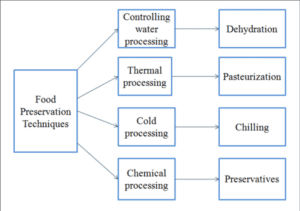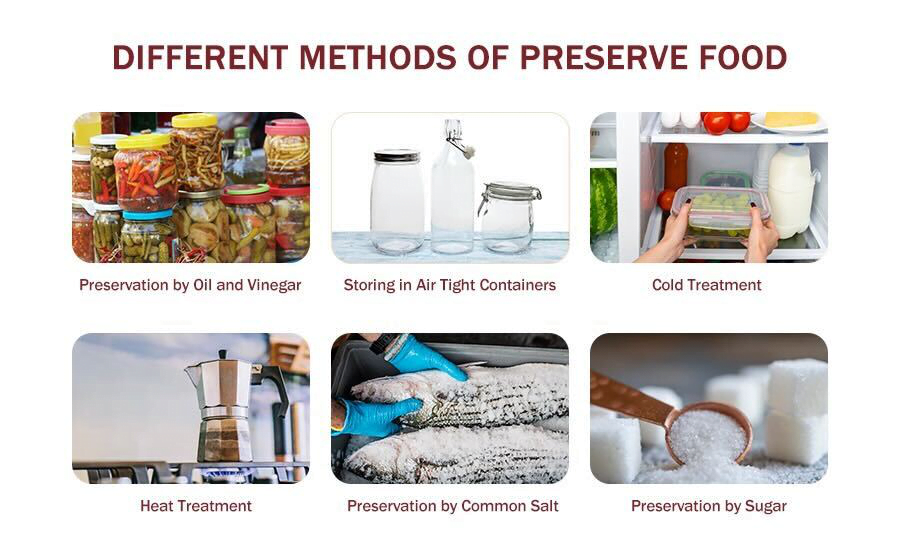What is Food Preservation?
- Food preservation is the process of preventing food from spoiling or becoming contaminated, thereby extending its shelf life and ensuring it remains safe to eat for a longer period
- Preservation techniques are used to slow down or halt the growth of microorganisms such as bacteria, yeasts, and molds, which can cause food to spoil, lose nutritional value, or become dangerous to consume
- Preserving food can be done through various methods, such as canning, freezing, drying, salting, smoking, pickling, and fermentation
- These methods can be used alone or in combination, depending on the type of food and desired preservation outcome
- Preserving food has been practiced for thousands of years by different cultures worldwide to ensure a stable food supply during times of scarcity, to preserve seasonal produce for consumption during off-seasons, or to create new flavors and textures.
- Today, food preservation remains a vital aspect of modern food production and distribution, allowing for safe transportation and storage of perishable goods and helping to reduce food waste.
- Food preservation is the practice of preventing food from spoilage, contamination, and deterioration
- Throughout history, humans have developed various techniques to preserve food to extend its shelf life and make it safe to consume for longer periods
- In this blog post, we’ll explore the different methods of food preservation and their benefit
- Food preservation based on thermal and chemical processing are classified as below

- Types of food preservation methods based on physics and chemistry

Food Preservation Methods
Food preservation methods are techniques used to extend the shelf life of food and prevent spoilage. Some common methods of food preservation include:
Canning
- This involves placing food in airtight containers and heating them to a high temperature to kill bacteria and other microorganisms that cause spoilage
- Canning is a popular method for preserving fruits, vegetables, and meats.
Freezing
- Freezing is a common method of food preservation that involves placing food in a freezer at or below 0°F (-18°C) to stop bacterial growth and extend the shelf life of the food. Freezing is a popular method for preserving meats, fruits, and vegetables.
Drying
- Drying is the process of removing moisture from food to prevent bacterial growth and spoilage
- This method is often used for fruits, vegetables, and meats, and can be done by sun-drying, air-drying, or using a dehydrator.
Salting
- Salting is a traditional method of preserving meat and fish by rubbing salt on the surface of the food to draw out moisture and prevent bacterial growth.
Smoking
- Smoking involves exposing food to smoke from burning wood or other materials to preserve and flavor the food
- This method is often used for meats, fish, and cheese.
Pickling
- Pickling is the process of preserving food in an acidic solution, such as vinegar or lemon juice, to prevent bacterial growth and extend the shelf life of the food. Pickling is often used for vegetables, such as cucumbers and beets.
Fermentation
- Fermentation is the process of using microorganisms, such as yeast and bacteria, to convert sugars in food into alcohol or acids
- This method is often used to preserve vegetables, such as cabbage (sauerkraut) and cucumbers (pickles)
- These are just a few examples of the many methods used for food preservation
- The choice of method depends on the type of food being preserved, the desired shelf life, and other factors such as taste and texture.
